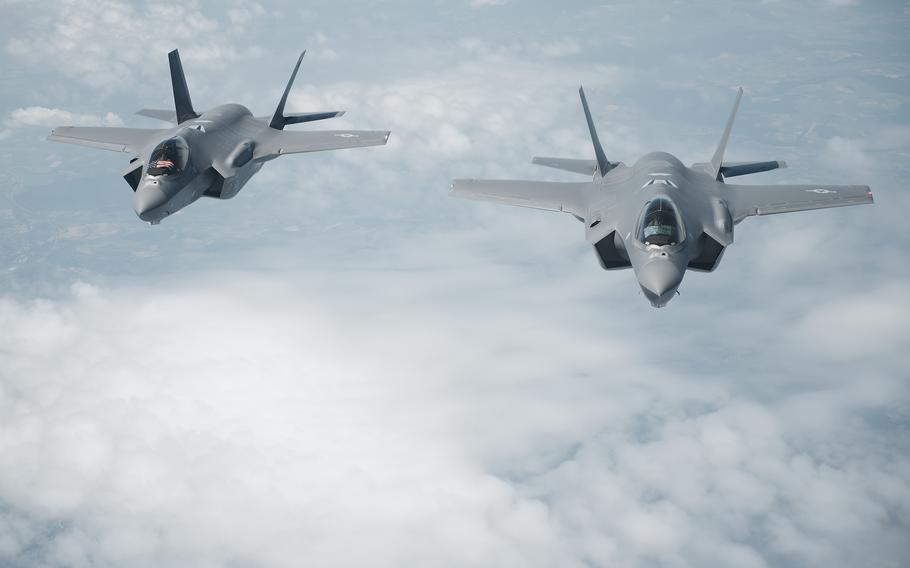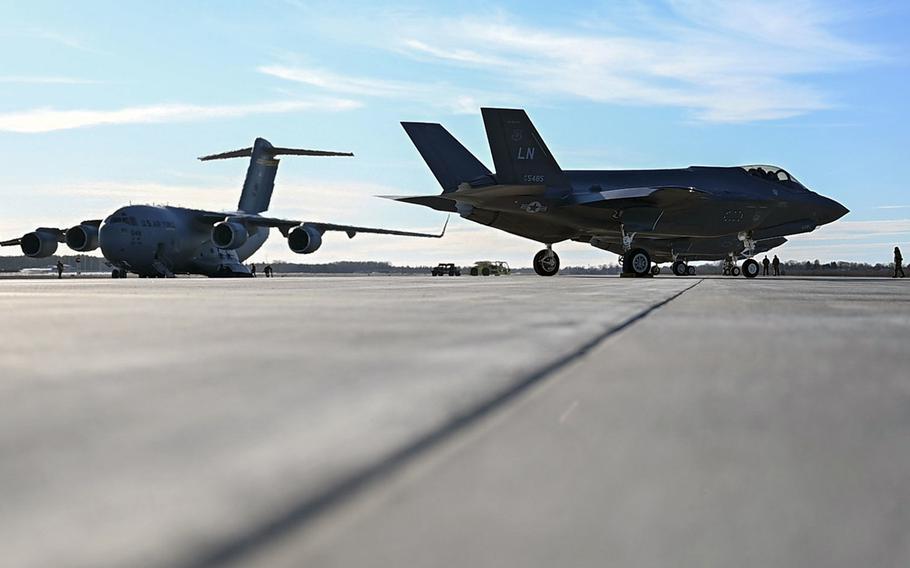
Two U.S. Air Force F-35A Lightning II aircraft assigned to the 134th Fighter Squadron, 158th Fighter Wing, Vermont Air National Guard, operating out of Spangdahlem Air Base, Germany, conducted low approach flyovers over the Baltic Sea region on June 16, 2022. (Ryan Campbell/U.S. Air National Guard)
NATO will add missile defense assets along the alliance’s eastern borders to guard against any potential threats that arise from Russia’s full-scale invasion of Ukraine, U.S. Air Force and NATO officials said Wednesday.
The strategy is called “air shielding,” an expression coined during last month’s meeting of NATO leaders in Madrid, said German Brig. Gen. Christoph Pliet, deputy chief of staff operations at NATO Allied Air Command headquarters at Ramstein Air Base in Germany.
The idea is to “deter and shield against any possible Russian aggression,” Pliet said, going beyond what NATO already has employed on the eastern flank since the Feb. 24 invasion.
Additional assets will be deployed for four to six months at a time, shoring up an area from Turkey to the Baltic states, Pliet said, while speaking with reporters alongside Maj. Gen. Joel L. Carey, U.S. Air Forces in Europe — Air Forces Africa director of operations, strategic deterrence and nuclear integration.
NATO partners will add “both air and ground-based air defense assets and the supporting enablers” needed for rotational forces, Carey said. Officials didn’t go into details on the number of additional troops that would rotate east.

A U.S. Air Force C-17 Globemaster III from Hickam Air Force Base, Hawaii and an F-35 Lightning II from RAF Lakenheath, England, are parked on the airfield at Ämari Air Base, Estonia, Feb. 27, 2022. (Megan Beatty/U.S. Air Force)
Earlier this month, Air Force F-35s, deployed from the U.S. to Spangdahlem Air Base, Germany, were sent on to Amari Air Base in Estonia. Beyond traditional air policing patrols, they’ll be able to “react on very short notice” from multiple locations, Pliet said.
Some ground-based air defense systems have been deployed as well, Pliet said, though he did not disclose where.
There’s no indication Russia intends to attack NATO territory anytime soon, Pliet said.
But the stepped-up use of missiles, drones and combat aircraft near the borders of NATO countries increases the chances of a miscalculation, or loss of guidance or control, NATO has said.
“We are currently in a shield,” Pliet said. If a miscalculation occurs, “we want to intercept, interrogate” and escort the aircraft out of NATO airspace.
He said the war in Ukraine has “brought back the sense of unity to the alliance and helps us elevate to a new level, helps us to challenge any threats that we might see in NATO.”